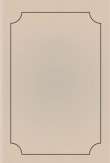You are here
قراءة كتاب Discoveries in Australia, Volume 1. With an Account of the Coasts and Rivers Explored and Surveyed During The Voyage of H.M.S. Beagle, in the Years 1837-38-39-40-41-42-43. By Command of the Lords Commissioners of the Admiralty. Also a Narrative Of Captain
تنويه: تعرض هنا نبذة من اول ١٠ صفحات فقط من الكتاب الالكتروني، لقراءة الكتاب كاملا اضغط على الزر “اشتر الآن"

Discoveries in Australia, Volume 1. With an Account of the Coasts and Rivers Explored and Surveyed During The Voyage of H.M.S. Beagle, in the Years 1837-38-39-40-41-42-43. By Command of the Lords Commissioners of the Admiralty. Also a Narrative Of Captain
SPEARS OF KING SOUND AND SWAN RIVER.
REID'S ROCKS, KING ISLAND AND THE BLACK PYRAMID.
SECTION OF THE NORTH-EAST COAST OF AUSTRALIA, AND GREAT BARRIER REEF.
NORTH-WEST PART OF MAGNETIC ISLAND.
SECTION OF A DETACHED CORAL REEF.
RUSH SHOULDER-COVERING OF NATIVES.
FISHES.
REPTILES.
INSECTS.
CHAPTER 1.1. INTRODUCTION.
Objects of the Voyage.
The Beagle commissioned.
Her former career.
Her first Commander.
Instructions from the Admiralty and the Hydrographer.
Officers and Crew.
Arrival at Plymouth.
Embark Lieutenants Grey and Lushington's Exploring Party.
Chronometric Departure.
Farewell glance at Plymouth.
Death of King William the Fourth.
For more than half a century, the connection between Great Britain and her Australian possessions has been one of growing interest; and men of the highest eminence have foreseen and foretold the ultimate importance of that vast continent, over which, within the memory of living man, the roving savage held precarious though unquestioned empire.
Of the Australian shores, the North-western was the least known, and became, towards the close of the year 1836, a subject of much geographical speculation. Former navigators were almost unanimous in believing that the deep bays known to indent a large portion of this coast, received the waters of extensive rivers, the discovery of which would not only open a route to the interior, but afford facilities for colonizing a part of Australia, so near our East Indian territories, as to render its occupation an object of evident importance.
His Majesty's Government therefore determined to send out an expedition to explore and survey such portions of the Australian coasts as were wholly or in part unknown to Captains Flinders and King.
H.M. SLOOP BEAGLE.
For this service H.M. Sloop Beagle was commissioned at Woolwich, in the second week of February 1837 by Commander Wickham, who had already twice accompanied her in her wanderings over the least known and most boisterous waters of the globe; first, in her sister ship of discovery, the Adventure, Captain King, and afterwards as first lieutenant of the sloop now entrusted to his command. Under Captain Wickham some of the most important objects of the voyage were achieved, but in consequence of his retirement in March 1841, owing to ill health, the command of the Beagle was entrusted to the author of the following pages; and as, by a singular combination of circumstances, no less than three long and hazardous voyages of discovery have been successfully completed in this vessel, some account of her here may not be wholly uninteresting. The reader will be surprised to learn that she belongs to that much-abused class, the 10-gun brigs--COFFINS, as they are not infrequently designated in the service; notwithstanding which, she has proved herself, under every possible variety of trial, in all kinds of weather, an excellent sea boat. She was built at Woolwich in 1819, and her first exploit was the novel and unprecedented one of passing through old London bridge (the first rigged man-of-war that had ever floated so high upon the waters of the Thames) in order to salute at the coronation of King George the Fourth.
VOYAGES OF THE BEAGLE.
Towards the close of the year 1825 she was first commissioned by Commander Pringle Stokes,* as second officer of the expedition which sailed from Plymouth on the 22nd of May, 1826, under the command of Captain Phillip Parker King; an account of which voyage,



